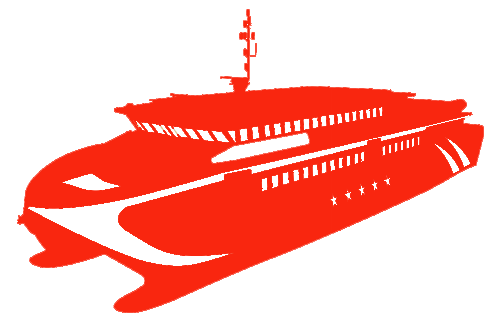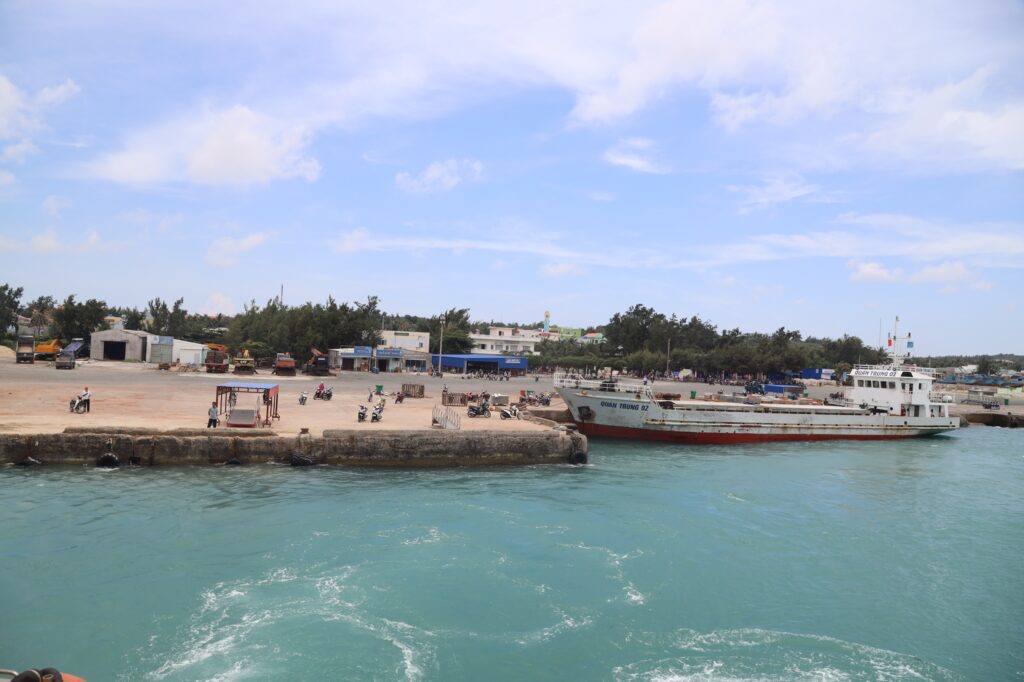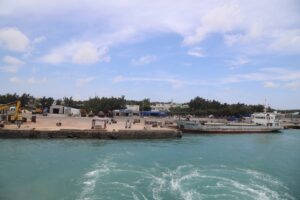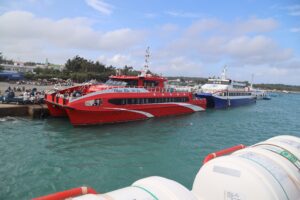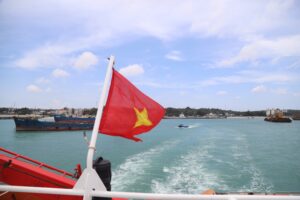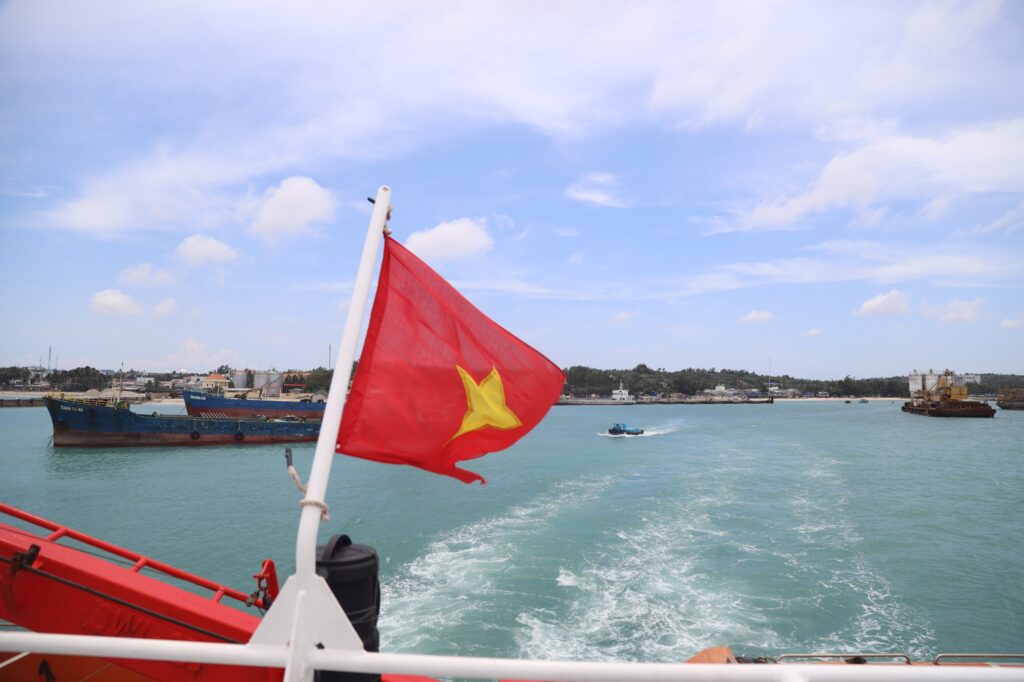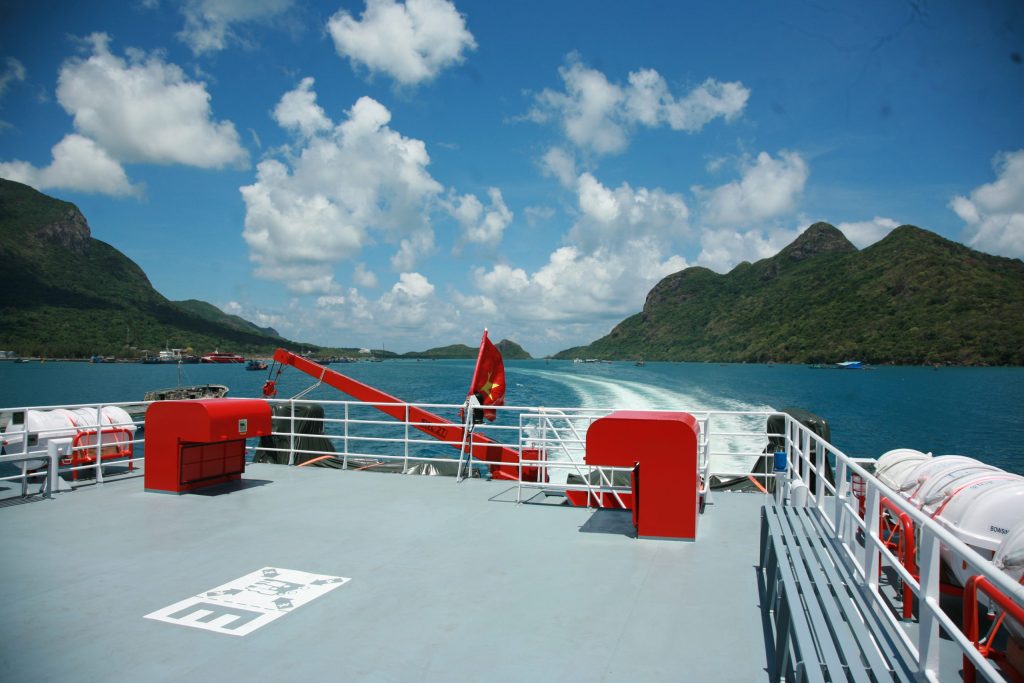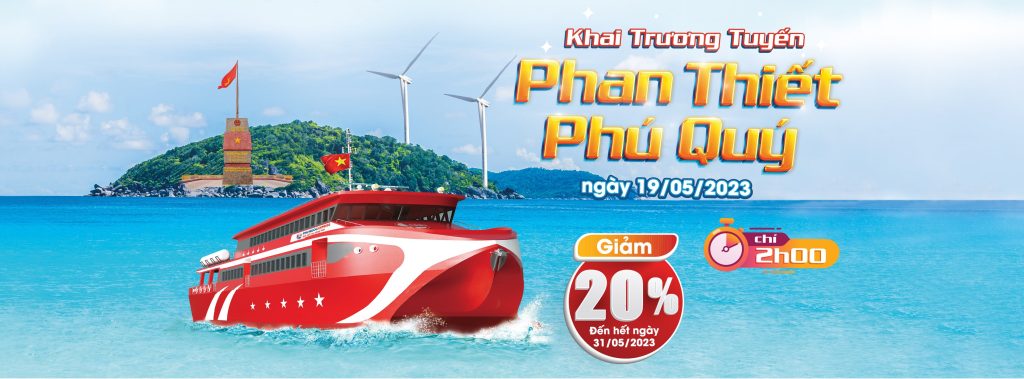Phú Quý Island lies more than 56 nautical miles from the mainland. For many years, the life of the islanders has always ebbed and flowed with the seasons of the wind. Hearing the north wind blow, fishermen steer their small fleets toward the southern part of the island. During the journey at sea, I heard many interesting stories that the people of Phú Quý have “etched” in their minds and on the communal houses and temples to preserve the memories of generations through a lifetime of storms.
The Mysterious Reefs
At dawn, from the beaches near Phú Quý port, the roaring sound of speedboats returning can be heard. Nowhere else do fishermen rely on small boats built like speedboats as much as on this island. The abundance of these speedboats is explained by the many islets around the island: Hòn Tranh, Hòn Trứng, Hòn Nhỏ, Hòn Hải, Hòn Giữa… Alongside countless small rocky mounds scattered around, sheer cliffs, deep abyssal waters with black depths, and suddenly, some rocky banks just at the water’s surface, creating a maze for the fishermen.
Few places have fishermen piloting boats and speedboats with as much skill as on Phú Quý. From the island looking out to sea, the speedboats run against the wind, continuously rising and falling. The north wind carries sounds from the sea to the shore: the sharp roar of the boat engines mixed with the rumbling as the speedboats leap and land on the waves.
For hundreds of years, islanders have adapted to the waves and wind, riding the waves like horseback to make a living and to be ready to protect the island. Historical records show that in 1833, up to 100 islanders were killed or wounded fighting pirates. At times, the royal court implemented a nationwide border defense policy, providing guns to villages for self-defense to protect the island.
On remote islands, unlike the mainland, old stories and memories of hard times are preserved orally and carved somewhere in communal houses. At Vạn An Thạnh, right in front of the port, a few fishermen returning from sea lit incense and silently stood before a stele inscribed in Classical Chinese. The inscription translates as: “Vạn An Thạnh was established in the year Tân Sửu (1781)… honoring the pioneers who reclaimed the land, founded the village, and built the hamlet on the island…”
Phú Quý’s waters were once a rich fishing ground and also one of the most mysterious nearshore islands. Many shipwrecks carrying artifacts from the 16th century were found several dozen nautical miles from Phú Quý. These ships were caught in whirlpools caused by strong ocean currents combined with tidal flows, creating unusually high waves.
The Winds of Past and Present
Phú Quý Island has about 1,500 fishing boats, with seafood catches exceeding 32,200 tons in 2022 alone. The north wind blows fiercely, and the island’s men still go out to fish. One once-bustling trade now nearly vanished is trolling fishing. Fishermen drop baited hooks tied to fake lures woven from straw, resembling fish, behind their boats, then let the sails run fast. If the sea is calm, they row hard. Schools of sharp-toothed needlefish chase the bait, while fishermen shout loudly to haul in the catch.
The north wind stirs little emotion among the island’s youth. Only those born on the island in the 1950s and 60s are filled with memories of the island’s harsh past. Though Phú Quý now sounds grand, it was once called Cù Lao Khoai Củ (Potato Islet). Mr. Huỳnh Do, a respected local who once chaired the District People’s Committee, raises his voice when recalling the windy season, trying to explain the hardships: “We ate tubers, corn, and wild beans — where was the rice to cook?”
Hearing the wind, Mr. Do reminisces that in the past, traveling from Phan Thiết town by boat to the island sometimes took up to two days and nights, going against the wind with everyone rowing four oars. Those not rowing curled up in a corner of the boat, enduring the sun, getting only one can of soft drink a day, while the rowers drank as much as they wanted.
Since 1999, fishermen from Quảng Ngãi have talked about the fishing grounds around Phú Quý. Following them, fishermen from Bình Định and Phú Yên also gathered around the island’s fishing grounds. The red snapper is a fish species typical to this island. Over time, the fishing grounds have been depleted, and now red snapper almost disappeared. As fish numbers dwindle, trolling fishing has gradually been abandoned. Nowadays, locals build small boats and speedboats, navigating nightly around the island’s shores like hunters setting traps in the mountains.
Golden Land for Tourism Development
A friend from the mainland asked me about my trip: “Is Phú Quý still poor?” That was a story of the past. Today, Phú Quý is no longer sparsely populated or deserted. A vital decision for tourism survival shortened travel time to the island to 120–150 minutes by passenger boats. In the rainy season, tourist numbers are low, but in the dry season, the island’s roads are bustling with people. The five high-speed boats can transport about 1,500 passengers per day. Tourist arrivals have grown annually from 16,000 to 42,000, then 95,000 visitors per year.
Lý Sơn Island, Quảng Ngãi Province, developed tourism earlier than Phú Quý, so looking at Lý Sơn gives an idea of Phú Quý’s tourism prospects. Tourism will attract some youth away from fishing to work in shore-based services. Then concerns arise about groundwater depletion and saltwater intrusion. Rapid urbanization means that the island’s traditional houses, with their historic charm and unique character, may gradually disappear—until one day, when nothing remains, the islanders will regret their loss.


